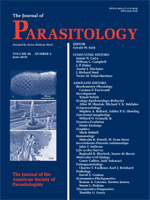In this article, we examined the influences of the polycultured potential hosts on monogenean seasonality and the possible linkage between the infestations on different species of hosts and host phylogeny. The seasonality of Diplectanum grouperi, the dominant species, on wild versus cultured groupers, Epinephelus spp., was analyzed in Daya Bay, South China Sea, between April 2008 and January 2009. The prevalence, mean intensity, abundance, and variance/mean ratio were calculated for each species of host under polycultured and wild conditions. Except for the overall prevalence, which was slightly higher in autumn than that in summer under wild conditions, the mean intensity and variance were highest in summer, decreasing slightly in autumn to lowest levels in winter or spring. The infection level (prevalence, mean intensity, and abundance) was correlated with changes in water temperature during the sampling period, with a peak in summer, with the exception of E. awoara in autumn under wild conditions. The prevalence, intensity, and mean intensity of D. grouperi on Epinephelus spp. in the wild were much lower than those in experimental (mixed species) culture ponds. The correlation between the molecular phylogeny of 5 species of Epinephelus and the dendrogram based on the susceptibility to D. grouperi was not significant, which infers that variable susceptibilities of these Epinephelus species cannot be revealed by phylogenetic relationships determined from mitochondrial 16S rDNA and Cyt b gene sequences.
BioOne.org will be down briefly for maintenance on 17 December 2024 between 18:00-22:00 Pacific Time US. We apologize for any inconvenience.
How to translate text using browser tools
1 June 2010
Seasonal Dynamics of Diplectanum grouperi Parasitism on Wild Versus Cultured Groupers, Epinephelus spp., and the Linkage Between Infestation and Host Species Phylogeny
Yufa Luo,
Christopher L. Brown,
Tingbao Yang
ACCESS THE FULL ARTICLE

Journal of Parasitology
Vol. 96 • No. 3
June 2010
Vol. 96 • No. 3
June 2010




